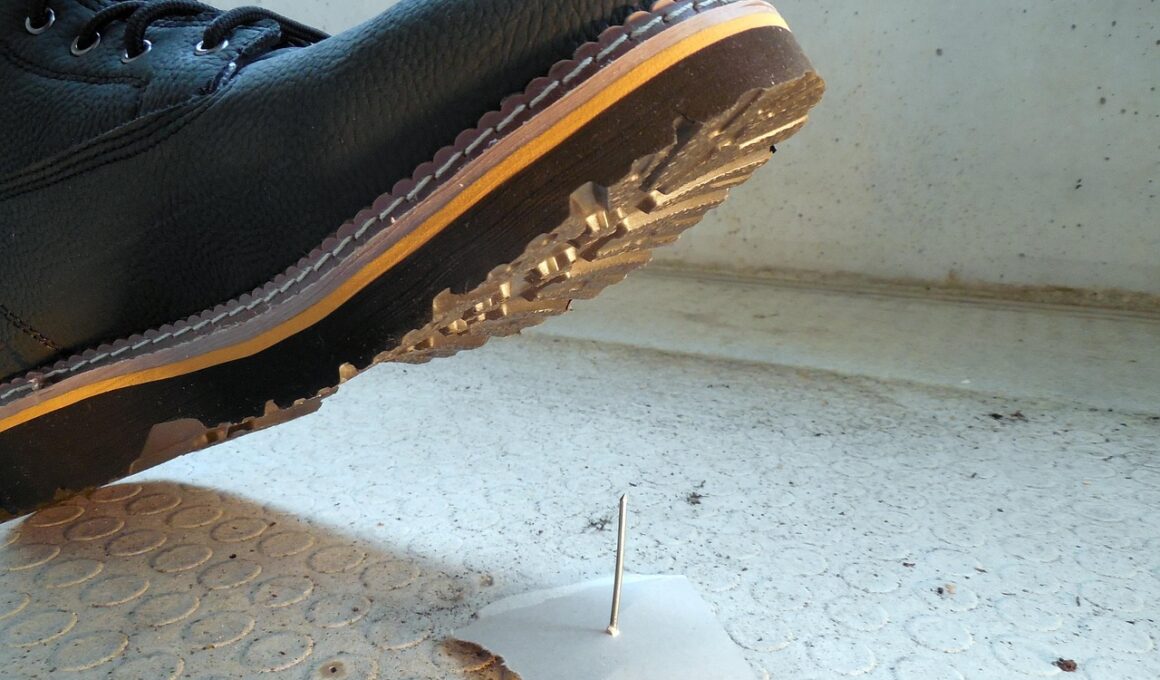Importance of Stretching Your Feet Before and After Exercise
Stretching your feet before and after exercise is crucial for preventing injuries and enhancing your overall performance. The feet are among the most utilized body parts during physical activities, bearing vast loads and undergoing significant stress. By integrating foot stretches into your routine, you enhance flexibility, which aids in improving balance and coordination while exercising. A proper stretching routine not only prepares the muscles and joints of your feet for action but also helps in alleviating any existing tension, thereby reducing the risk of injuries. Consider doing both static and dynamic stretches, which can target the various muscles, tendons, and ligaments in your feet. Key stretches include the toe stretch, arch stretch, and calf raise. Engaging in these activities before beginning a workout routine will elevate blood circulation to your feet, ensuring they are adequately prepared for the demands of exercise. Additionally, post-exercise stretching assists in recovery, minimizing soreness and tightness while maintaining flexibility. Establishing this practice will lead to healthier feet and a more rewarding exercise experience.
Understanding the Anatomy of the Foot
The foot consists of numerous bones, muscles, tendons, and ligaments that work collectively to support your body weight and allow mobility. It contains 26 bones, 33 joints, and over 100 muscles, tendons, and ligaments, making it intricate and complex. During any form of physical activity, these structures endure considerable pressure and strain. Consequently, failure to stretch adequately can lead to conditions such as plantar fasciitis, Achilles tendonitis, or even ankle sprains. By practicing foot stretching, you can help maintain optimal function by improving circulation in the area, elongating tight muscles, and fostering elasticity. This is particularly important after engaging in high-impact activities like running or jumping, where the feet endure a great deal of stress. Incorporating specific stretches into your routine enhances flexibility and mobility, allowing for a broader range of motion. Additionally, it aids in the prevention of foot-related injuries that can derail your fitness progress. Therefore, understanding the anatomy of the foot is essential when committing to a stretching routine for injury prevention and recovery purposes.
Incorporating foot stretches into your warm-up routine is a proactive strategy for minimizing injuries. Warm-ups prepare your muscles by gradually increasing blood flow and reducing stiffness, thereby enhancing performance during exercise. When the feet are adequately warmed up, they are less prone to injuries, such as strains and sprains. Start with gentle rotations of the ankles and followed by dynamic stretches that engage the muscles, such as heel raises or toe bends. Performing these exercises gradually prepares the feet for the activity ahead. In addition, this routine promotes better joint function, enabling individuals to execute movements with more precision and fluidity. Moreover, ensuring that the muscles around the feet and ankles are activated during the warm-up can play a vital role in safeguarding them against undue stress. It aids in fostering body awareness and coordination during workouts, which ultimately helps in optimizing performance. Additionally, this practice aids in maintaining proper foot alignment while running or engaging in dynamic sports activities, mitigating the risk of injury.
Post-exercise stretching of the feet is equally essential for recovery. After engaging in high-intensity exercises, your muscles need time to relax and restore themselves to their normal state. Foot stretches can significantly contribute to this recovery phase. By executing these stretches, you assist in reducing muscle tension and soreness, enhancing overall recovery times. Focusing on the arches and calves, for instance, can alleviate post-exercise pain and decrease the chances of developing chronic conditions. Some effective post-exercise stretches include the seated toe stretch and the standing calf stretch. Furthermore, incorporating foam rolling into your routine can serve as an effective technique to release tension and improve flexibility in your feet and lower legs. This practice enhances blood flow while flushing out metabolic waste accumulated during exercise. Committing time to stretch and care for your feet post-workout will promote longevity in your physical activities. The end result will be not just healthier feet but also a significantly improved performance when you return for your next workout session.
Benefits of Stretching Your Feet Regularly
Regular stretching of the feet contributes to a plethora of benefits that extend beyond injury prevention. Firstly, flexibility is a foundational element in maintaining balance and preventing falls, especially as one ages. Through consistent stretching, the flexibility of the foot muscles is enhanced, decreasing stiffness and promoting ease of movement. Secondly, dedicated stretching can improve athletic performance by facilitating more effective force transfer through the foot, ultimately resulting in enhanced speed and agility. Moreover, incorporating these practices into your daily routine may help alleviate chronic foot pain often experienced due to improper footwear or long hours of standing. By recognizing the benefits of stretching, you’ll encourage habits that lead to healthier feet and enhanced quality of life. Furthermore, effective foot stretches can also enhance overall body posture, ensuring alignment throughout the kinetic chain. Finally, this practice engenders mindfulness regarding foot health, encouraging you to select supportive footwear that complements the needs of your feet. Overall, the cumulative benefits of regular stretching transcend injury prevention, promoting holistic well-being throughout the lower extremities.
Incorporating foot care practices alongside stretching amplifies your efforts to preserve foot health. This includes wearing appropriate footwear designed to provide necessary support for various physical activities. Shoes should fit properly, reducing instances of blisters and ensuring adequate space for toes to move. Additionally, aim to choose shoes that provide cushioning and shock absorption, essential for minimizing impact during exercise. Regular foot care should also involve inspections for any abnormalities or injuries that may require more attention. It’s essential to practice regular hygiene, especially if engaging in activities that lead to sweaty feet, which can cause fungal infections. Moisturizing the feet daily can combat dryness and cracking, contributing to overall foot health. Furthermore, you might consider scheduling regular visits to a podiatrist to address any concerns or receive tailored advice on foot care. Altogether, these practices work synergistically with stretching routines to enhance strength, flexibility, and durability of the feet. Prioritizing these actions fosters a proactive approach to foot health, ensuring that they can adequately bear the weight of daily life and exercise activities.
Conclusion: Prioritizing Foot Stretching
In conclusion, stretching your feet before and after exercise is a fundamental practice that significantly contributes to injury prevention and recovery. Given the intricate structure of the foot, prioritizing this practice actively safeguards against common injuries while enhancing overall performance. Embracing a consistent stretching routine and integrating foot care additionally fosters improved flexibility, balance, and circulation, leading to healthier feet. The combination of properly executed warm-up and cool-down stretches provides an excellent foundation for all activities, whether casual walking or intense athletic training. Furthermore, these practices ensure your feet remain in optimal condition, enabling a more active lifestyle free of discomfort or limitations. Achieving this involves understanding the anatomy of the feet and tailoring interventions specifically to your lifestyle and exercise preferences. Therefore, make foot stretching a non-negotiable component of your fitness regimen. Not only will you experience immediate benefits in improved agility and reduced soreness, but you are also setting the stage for long-term foot health. By prioritizing foot stretching today, you are investing in a lifetime of mobility and wellness to enjoy every step you take.
Furthermore, when stretching your feet, it’s essential to listen to your body to avoid overexertion. Gradually easing into stretches helps ensure you’re not forcing your muscles beyond their limits. If you experience pain during stretches, it’s crucial to stop and assess the situation. Paying attention to how your body responds can prevent potential injuries. It’s essential to keep in mind that progress may vary from person to person, and what feels comfortable for one individual might not feel the same for another. Maintaining a regular stretching schedule yields substantial benefits, as consistency amplifies flexibility and strength over time. Thus, aim to include stretching sessions within your exercise routine to reap the maximum benefits from this practice. It’s also beneficial to work with a physical therapist or a qualified trainer who can guide you in formulating an effective stretching program tailored to your specific needs. Ultimately, acknowledging the significance of foot health and committing to a stretching regimen will enhance your overall fitness experience. Prioritizing foot care is not merely about preventing injuries, but a commitment to living an active, healthy, and fulfilling life.


